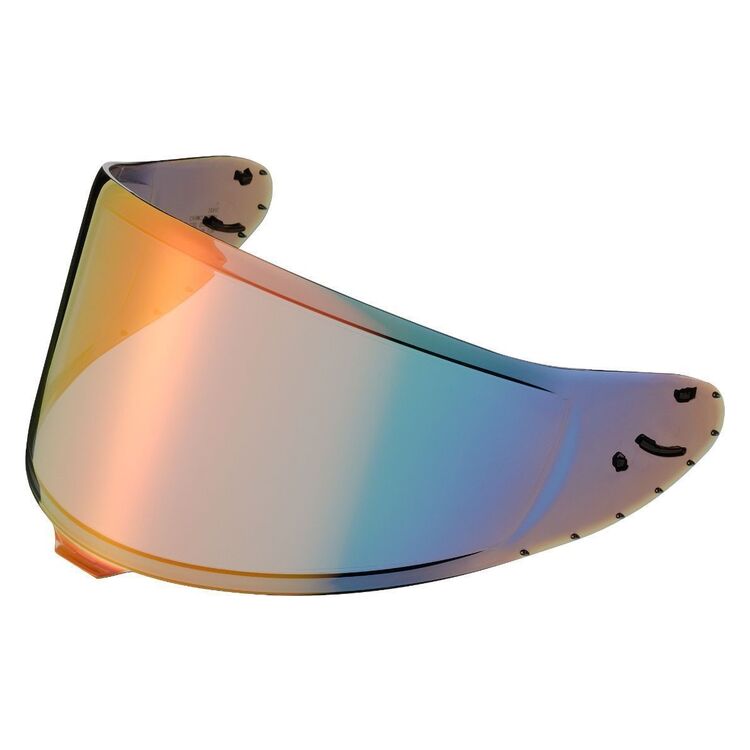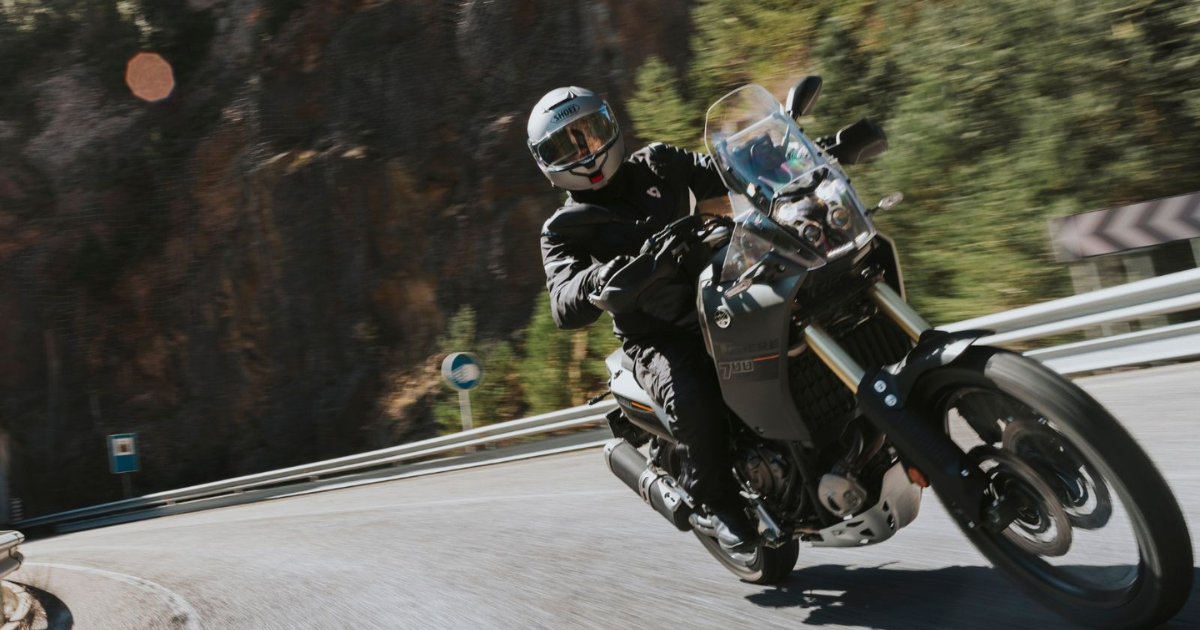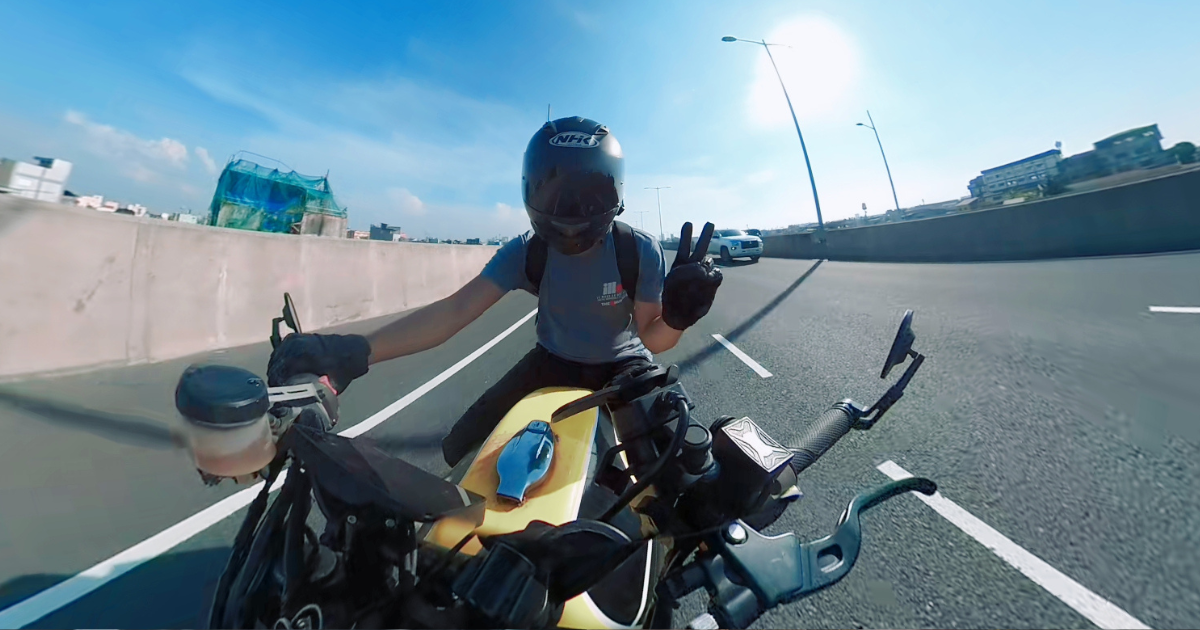
Shoei Neotec 3 Modular Helmet: Review & Neotec 2 Compare
left for contents
Today I’m diving into the Shoei Neotec 3—Shoei’s latest modular helmet. I’ve been running the Shoei RF-1200 for a while, but I hit that five-year mark where it’s time to replace helmets, and this time I wanted to try something new. My wife Kate has the Neotec 2, and after trying hers and liking the modular concept, I decided to go with the Neotec 3. This is more of a first look than a full review—I’ll come back with a long-term follow-up later on.
This article is based on the video by Bry The Biker.
Why the Neotec 3?
I’ve already put some miles on this lid, and I have some early impressions. It just released recently and currently stands as Shoei’s only modular helmet. I’ll be running this alongside a traditional full-face helmet this year.
A premium modular helmet built for long-distance comfort and low noise, with a smooth flip-up chin bar, tightly-sealing visor and wide drop down sun shade. Fits the SRL3 Sena comms system seamlessly.
- Excellent protection with AIM composite shell
- Can be custom fit by Shoei
- Integrated sun visor and Pinlock shield
- Ready for SRL3 Comms system
- Heavier than some competitors
What’s Changed from the Neotec 2
The shell lines are sleeker, the interior quieter, and the vent scheme totally re‑engineered.
1. The Shield System
Right off the bat, one thing that’s evolved is the shield mechanism. The one I’m using isn’t the stock shield—it’s the $150 Spectra Fire Orange mirrored shield, which I think is worth the upgrade.
The Shoei CNS-3C is the OEM replacement shield for Neotec 3 helmets, delivering optical-grade clarity, UV protection, and quick tool-free installation, plus Pinlock® insert compatibility for fog-free riding.
- Pinlock®-ready for reliable, fog-free visibility
- Tool-free install/removal
- Optical clarity with >99% UV protection
- Premium price versus aftermarket shields
- Pinlock® insert sold separately
- Only fits Neotec 3 helmets
2. New Center Locking Mechanism
The visor latch now sits dead center instead of off to the side—a change I wasn’t sure I’d love, but I absolutely do. You reach underneath, press the button, and the shield pops open just a crack—what I call “city mode.” It’s the perfect gap for a quick burst of airflow. From there you can lift the visor through its full range and ratchet it closed again.
I originally wondered if a centered control would feel awkward, since I’d never used one before. Shoei says moving the latch cuts down on visor twisting and should extend the shield’s life. In practice, that central handle gives a smoother, more balanced lift, and the one-touch crack-open is ideal for urban riding when you need a little fresh air fast.
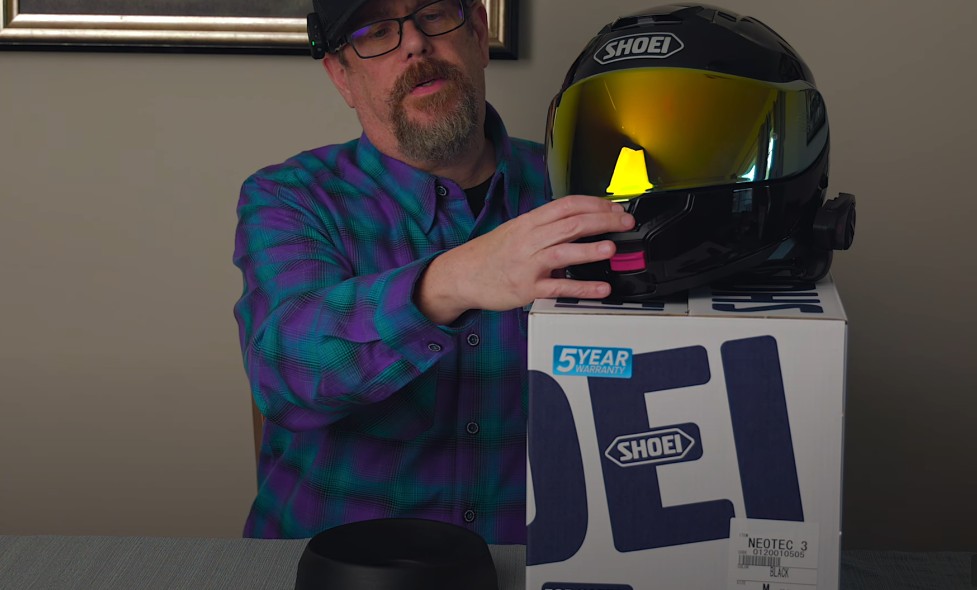
Initial Likes, Dislikes & Differences
Unconventional Takeaways Up Front:
- Airflow vs. Noise – The Neotec 3 feels “less airy” only because it’s quieter; actual airflow is just as strong, merely better distributed.
- Dual Detent Perk – Being able to lock the chin bar fully up at low speeds is handier than I expected for traffic and quick chats.
- Tight Fit Pays Off – Sizing down felt snug at first, but once broken in it’s quieter, safer, and fits like it was custom-made.
Ventilation & Airflow
Shoei has reworked the chin vent: it’s now a two-position slider with a generous opening and, surprisingly, a built-in filter to keep bugs and debris out.
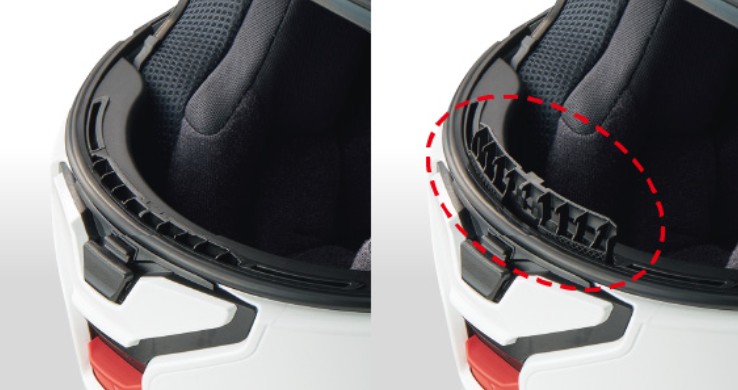
That vent pairs with an internal rubber nose-deflector, which splits the flow—half upward to clear fog, half toward your cheeks. It’s genuinely effective, and, as you’d expect at this price, the helmet ships with a Pinlock insert for added anti-fog protection.
Up top you get another two-stage vent—closed, half-open, and fully open. I’ve had zero issues with airflow. Some reviewers say the Neotec 3 runs warmer than the Neotec 2, but I suspect that’s the redesign at work. My brief test of the 2 felt like a fridge blasting one cold spot on your scalp; the 3 distributes the air more evenly around your head. The sensation is subtler, yet the overall flow seems better balanced.
Let’s Talk Quiet
The noise level also plays into this air perception. I believe the noise in the Neotec 2 might make you think you’re getting more airflow than you are. The Neotec 3 is considerably quieter than the Neotec 2. By dampening the air intake noise and smoothing out the airflow path, they’ve made this helmet a lot more quiet.
Shoei put serious work into reducing noise:
- Thicker neck roll
- Chin curtain
- Better seal around the face and jaw
All those things cut down on road noise—especially from underneath.
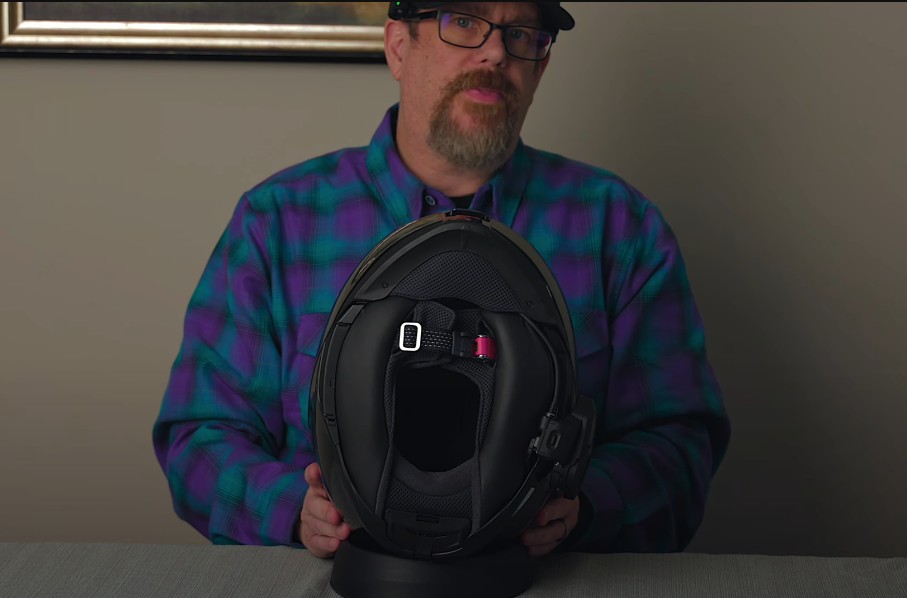
Ratcheting Chin Strap
Another change they’ve made is to the buckling system—it still uses a ratcheting design. Some riders aren’t fans of ratcheting buckles, but I think they’re excellent. This new version is a bit thinner than the last one, so it feels less bulky and pulls on your chin less—an improvement in my book.
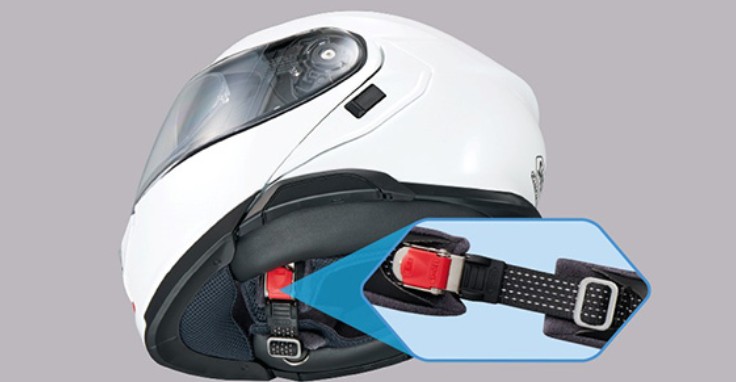
Modular Mechanism Upgrade
One feature I’ve come to appreciate—though I barely considered it when choosing this helmet—is the modular mechanism’s dual detents. Press the release button and the chin bar lifts to the typical halfway stop you find on most modular lids. Push a bit farther and it locks into a second detent, sitting fully upright.
That extra travel means I can actually ride with the chin bar all the way up. I wouldn’t try it at highway speed, but for slow rolls, stop-and-go traffic, or cruising a parking lot, it’s a game-changer. Airflow is terrific when you’re barely moving, and snapping the bar back down for speed takes a split second.
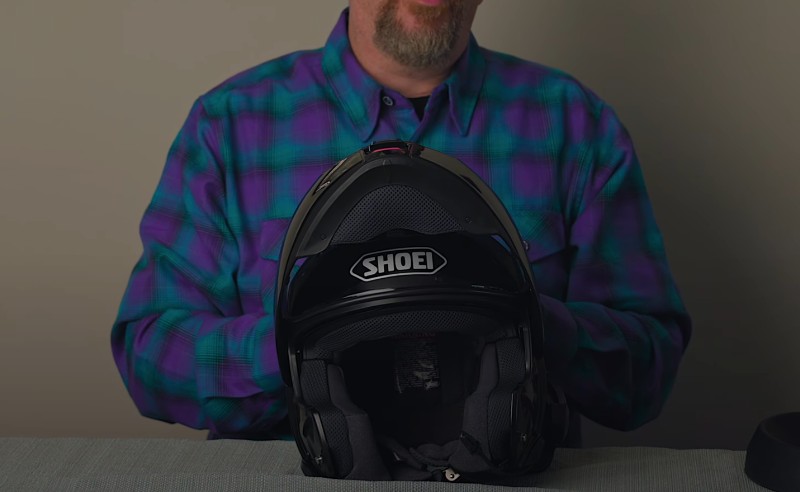
Like my wife said—and I’ve now confirmed—modular helmets really shine off the bike. Flip the chin bar up at fuel stops or for quick directions and people can hear you, so you don’t feel quite so “motorcyclist-ish.” With that barrier gone, everyday interactions get a lot simpler—a clear plus for the modular design.
Fit, Comfort & Sizing
Because the Neotec 3 is Shoei’s lone modular offering, it feels like they poured everything into making it a true touring lid—quiet, airy, and built for long-distance comfort. The interior is plush, though I’ll admit the new liner feels a touch rougher than the Neotec 2’s at first. After a few sweaty rides it softens up nicely, so no complaints once it breaks in.
Proper fit, though, is non-negotiable. I spent years assuming I was a Shoei Large because it felt “fine.” Then I slipped on my wife’s Medium Neotec 2 and immediately felt the difference—tighter, more secure. A real fitting confirmed I’m right between Medium and Large, and every expert said to size down and let the helmet mold to me. That snug fit isn’t just safer; it also seals out wind, which means a noticeably quieter ride.
Comm System Compatibility
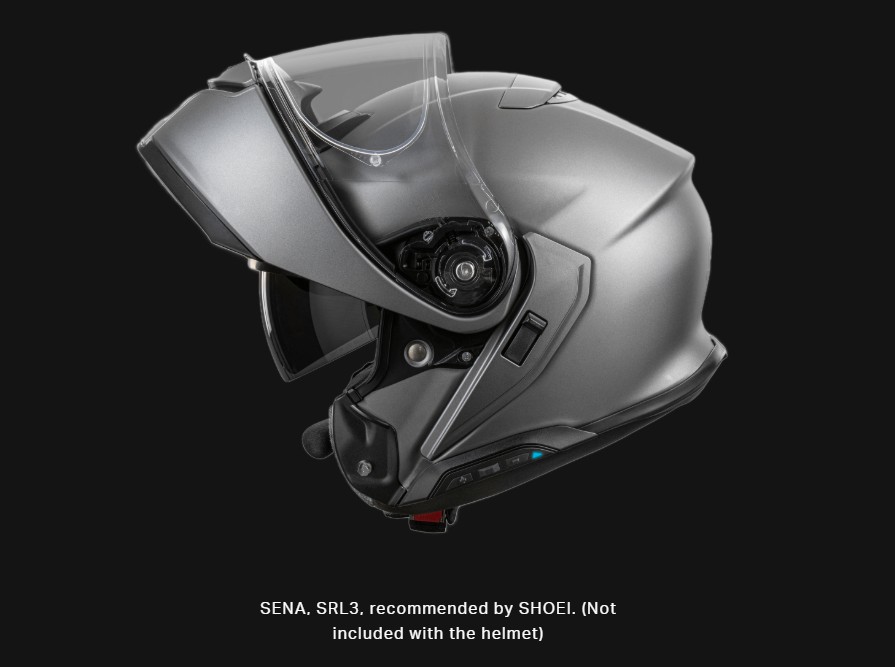
The helmet is wired to accept Shoei’s own integrated comm system—roughly a $300 add-on—but I don’t run it. Instead, I use a Harley-Davidson–branded unit built on Sena tech because it syncs seamlessly with the bike’s electronics. If you ride something other than a Harley and want that factory-clean install, the Shoei setup is ready to drop in; otherwise, the Sena-based options work just fine.
Neotec 2 vs Neotec 3: Side-by-Side
Neck Roll & Fit
The moment you set the two helmets next to each other, the neck roll difference jumps out. On camera it looks minor, but in person the Neotec 3’s opening is noticeably tighter—and that smaller gap cuts wind noise far more effectively.
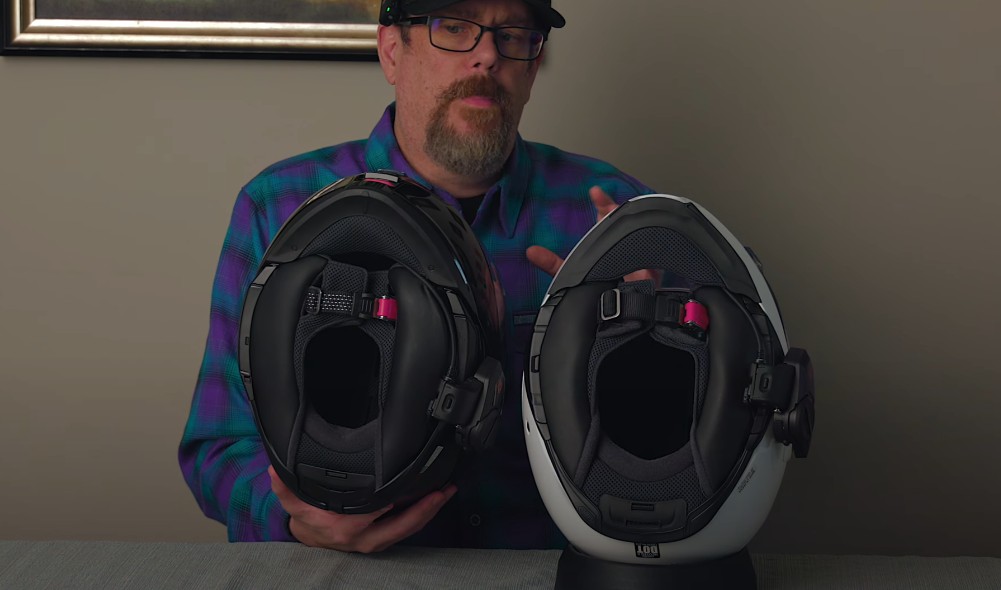
Chin-Vent Redesign
Up front, the Neotec 2 relies on a single flip-up vent. The Neotec 3 swaps that for a two-position slider, giving you finer control. Pair that with the new center-mounted latch and the chin bar now snaps shut with a firm, confidence-inspiring click. Pop it once and you’re in “city mode”; the Neotec 2 never had that crisp detent.
Top-Vent Perception vs. Reality
Both lids keep a two-stage top vent, but the 3’s intake looks slimmer. That has led some riders to assume airflow is weaker. My hot-and-humid test rides say otherwise: Shoei’s re-routed ducting moves just as much air—just more quietly. The reduced noise tricks you into thinking less air is coming through.
Shell & Aero Tweaks
Open both chin bars and you’ll notice subtle changes in how the front mates to the shell. Channeling is cleaner, the shield interface seals tighter, and Shoei carved a bit more space for the drop-down sun visor—all in the name of better aerodynamics and a quieter ride.
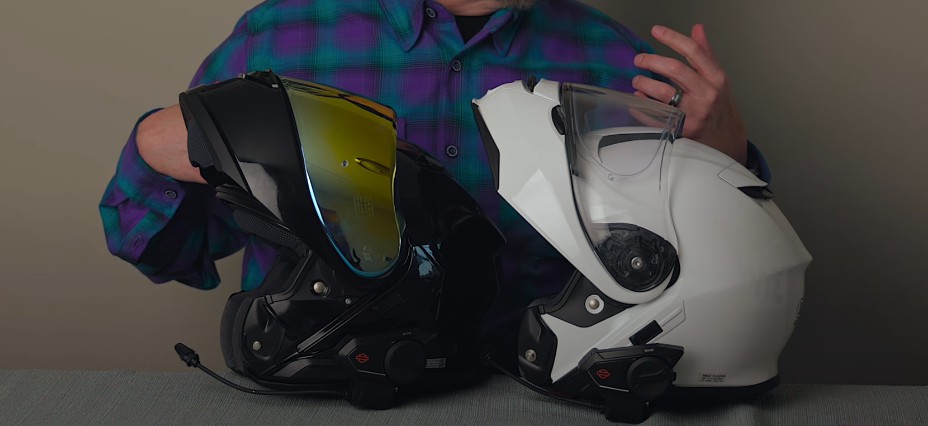
Sizing & Break-In
Shoei sizing remains consistent across both models, but a proper fit session is still essential. The Neotec 3 felt borderline too tight on day one; a few sweaty rides later it molded perfectly to my head and the noise dropped even further.
Electronics Compatibility
One caveat: the integrated comm unit from the Neotec 2 won’t fit the 3, so an upgrade means buying the newer system.
Bottom Line
None of these tweaks are deal-breakers for the older helmet, but each small refinement on the Neotec 3—tighter neck roll, dual-stage chin vent, crisper latch, and aero cleanup—adds up to a noticeably quieter, more versatile touring lid.
Minor Quirks—Worth Noting but Not Deal-Breakers
Peripheral Vision with Pinlock
Through the Neotec 3’s visor—especially with the Pinlock installed—you can just see the insert’s edges nibbling at your peripheral vision. They sit in the far corners when you flick your eyes side to side. It’s not a deal-breaker, but if you’re sensitive to visual distractions, you’ll spot it. Installing the mirror shield adds another wrinkle: because you can’t see through it until it locks in place, lining it up takes a little patience.

Shell Refinements & Aerodynamics
Shoei also reshaped the exterior—raising subtle lines, deepening grooves, and slimming the intake vent. On a white shell the changes are almost invisible, yet they streamline airflow, quiet the ride, and ease neck strain. For a touring helmet you’ll wear all day, that extra aerodynamic polish translates directly into comfort.
Touring-Focused Upgrades
This is a touring helmet through and through:
- Improved aerodynamics
- Quieter ride
- Lighter feel
- Built-in drop-down sun visor (with slightly more coverage than before)

The Price Question
At $899, the Neotec 3 is far from cheap—but riders shopping in this touring-modular category already appreciate the value of a premium lid. Break it down over Shoei’s recommended five-year replacement cycle and the cost works out to just a few dollars a month. For me, that’s an easy return on investment: you only get one head. Spend the money, and make sure the helmet fits perfectly—proper fit matters as much for safety as it does for comfort and noise control.
Not sure your comms unit will fit?
Sometimes the perfect helmet comes with a catch—it’s designed around a specific Bluetooth unit. That can make it tough if you prefer something different. With an adapter from Tubs Jackson, you can get a factory fit for any comms units on helmets you actually want to ride in.
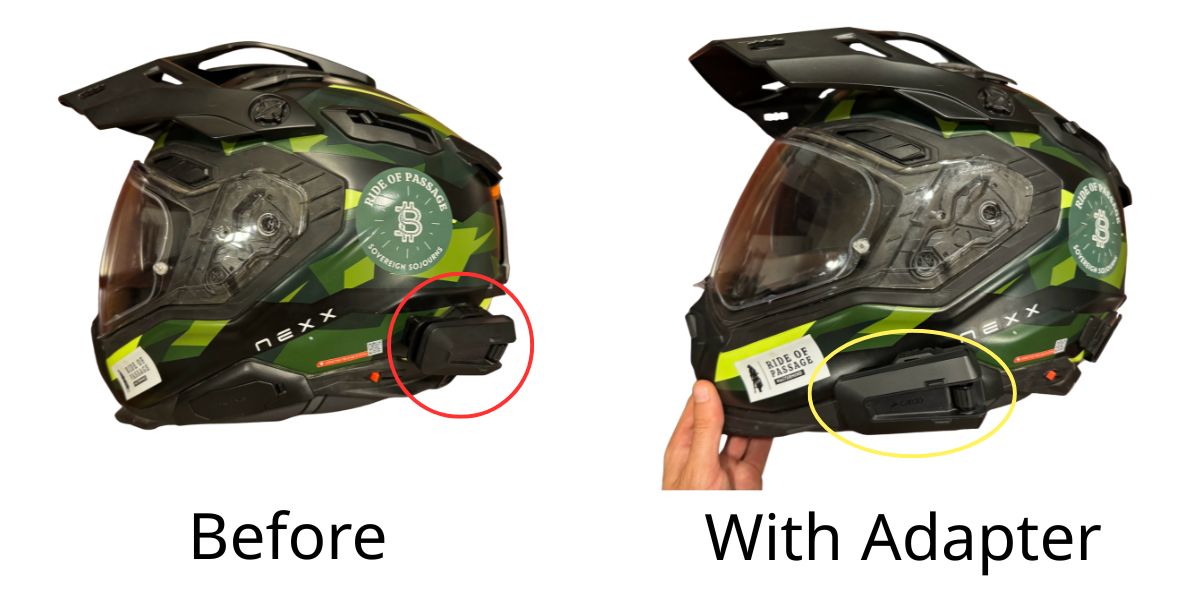
Tubs Jackson is a weird name, I know, but I have their adapter in my Nexx X.WED3 helmet and it’s rock solid. Much nicer than reaching way back to where I had the sticky mount before. I wish I’d thought of this idea.
Tip: Get FREE SHIPPING just by buying here or using code BETTERONTHEROAD at checkout.
Final Thoughts
Shoei nailed it with the Neotec 3. It’s quieter, sleeker, and more comfortable than the Neotec 2. You do lose backward compatibility with older comms units, and yes—it’s pricey. But it feels like a helmet designed to be worn all day, every day, with less fatigue and more confidence.
Would I buy it again? Absolutely. Once it breaks in, it’s hard to imagine anything better for touring.
A premium modular helmet built for long-distance comfort and low noise, with a smooth flip-up chin bar, tightly-sealing visor and wide drop down sun shade. Fits the SRL3 Sena comms system seamlessly.
- Excellent protection with AIM composite shell
- Can be custom fit by Shoei
- Integrated sun visor and Pinlock shield
- Ready for SRL3 Comms system
- Heavier than some competitors
Related

Carbon Fiber Modular Helmets: Ultimate Flip-Up Lids
Discover carbon fiber modular helmets that deliver flip-up convenience, lightweight strength, and serious protection for every ride.


